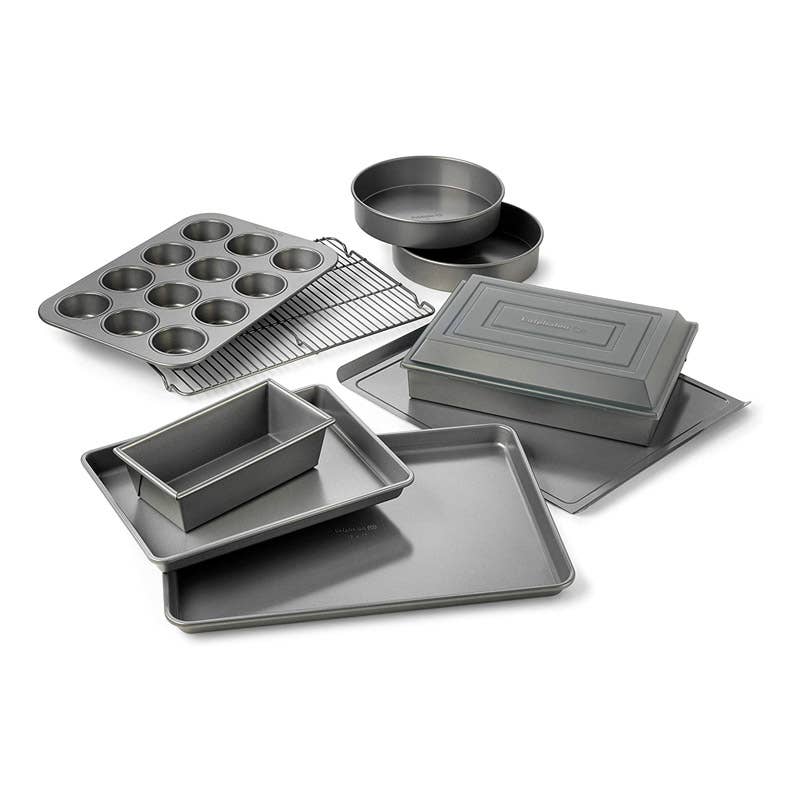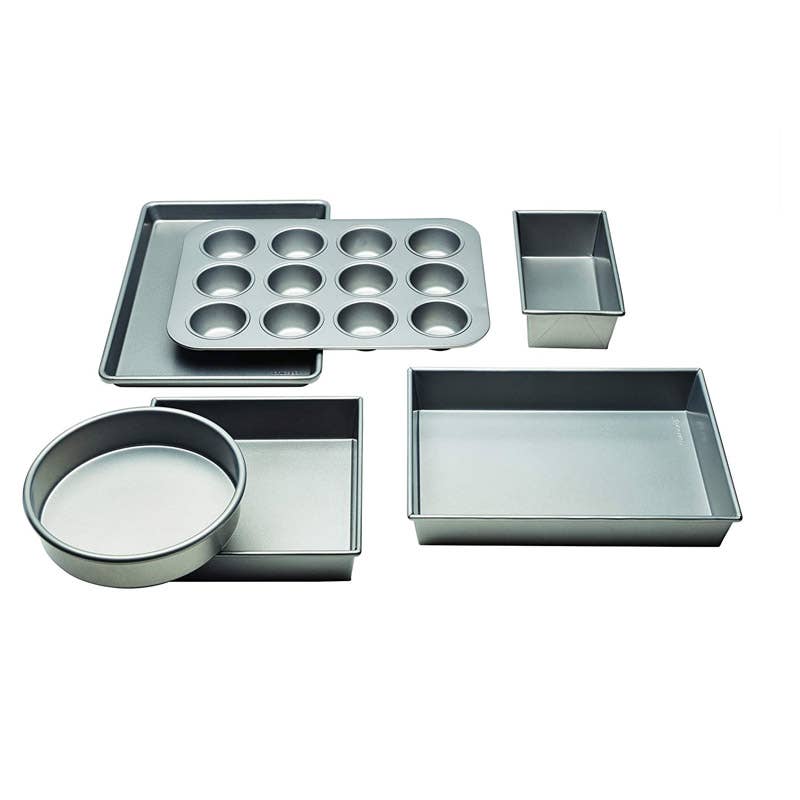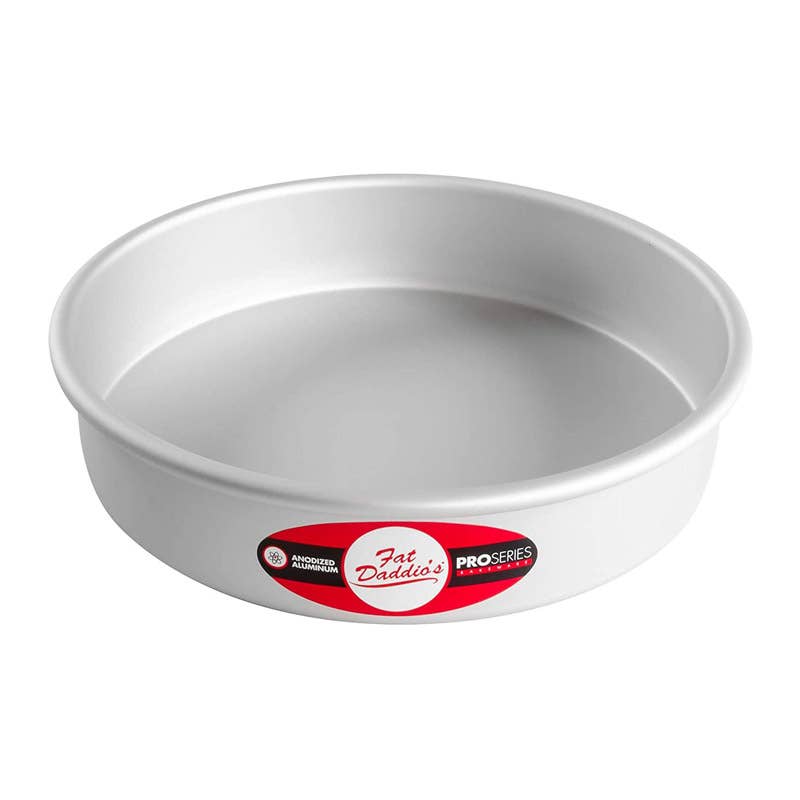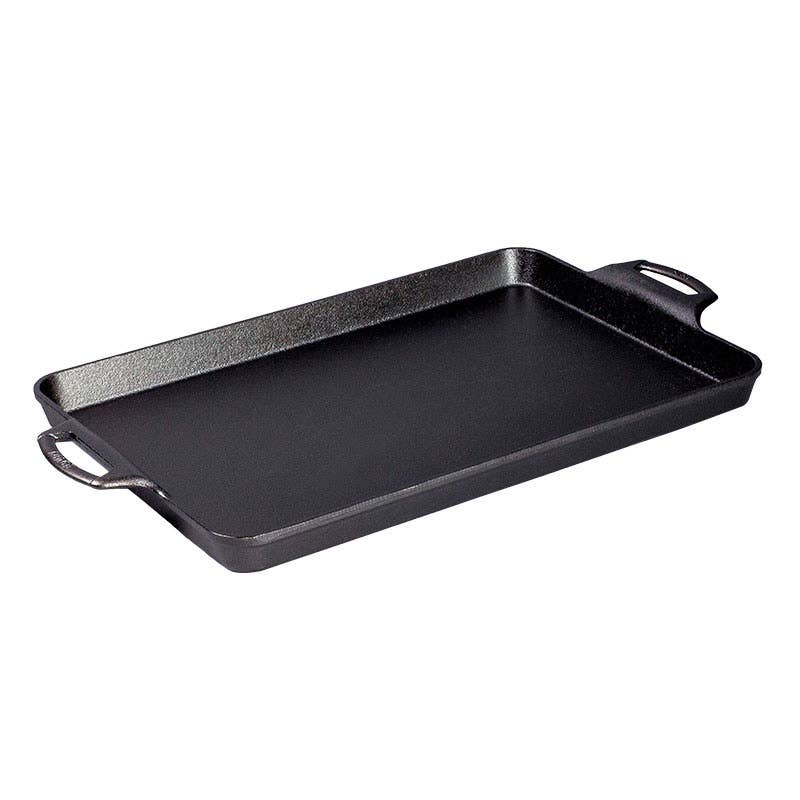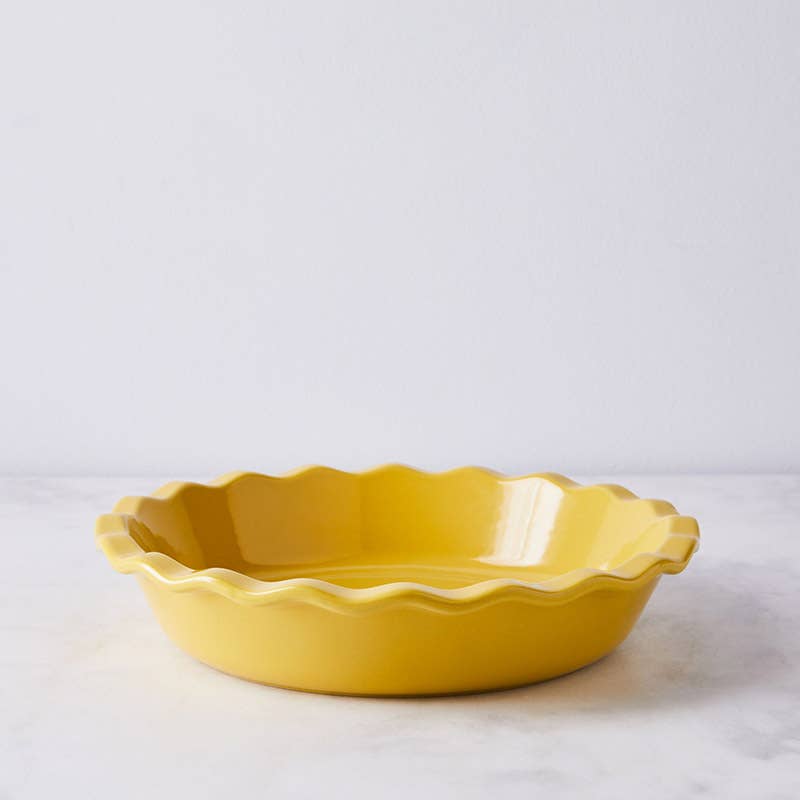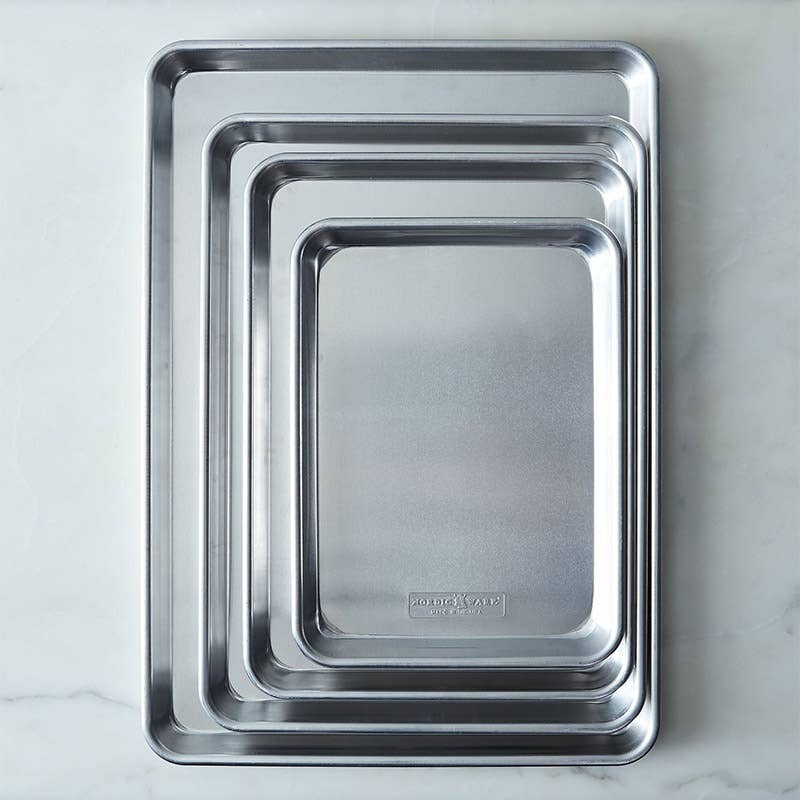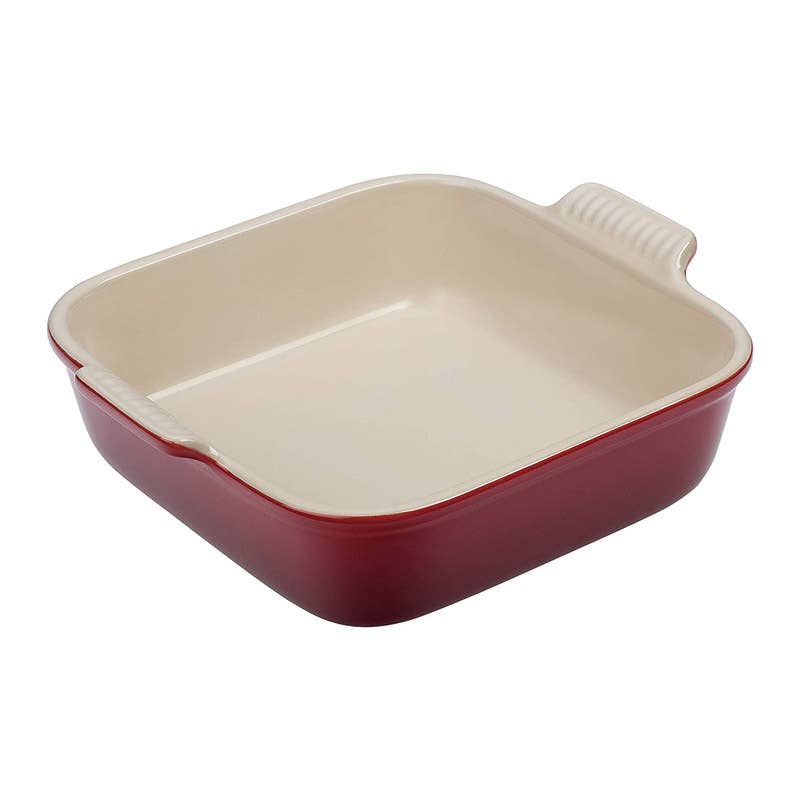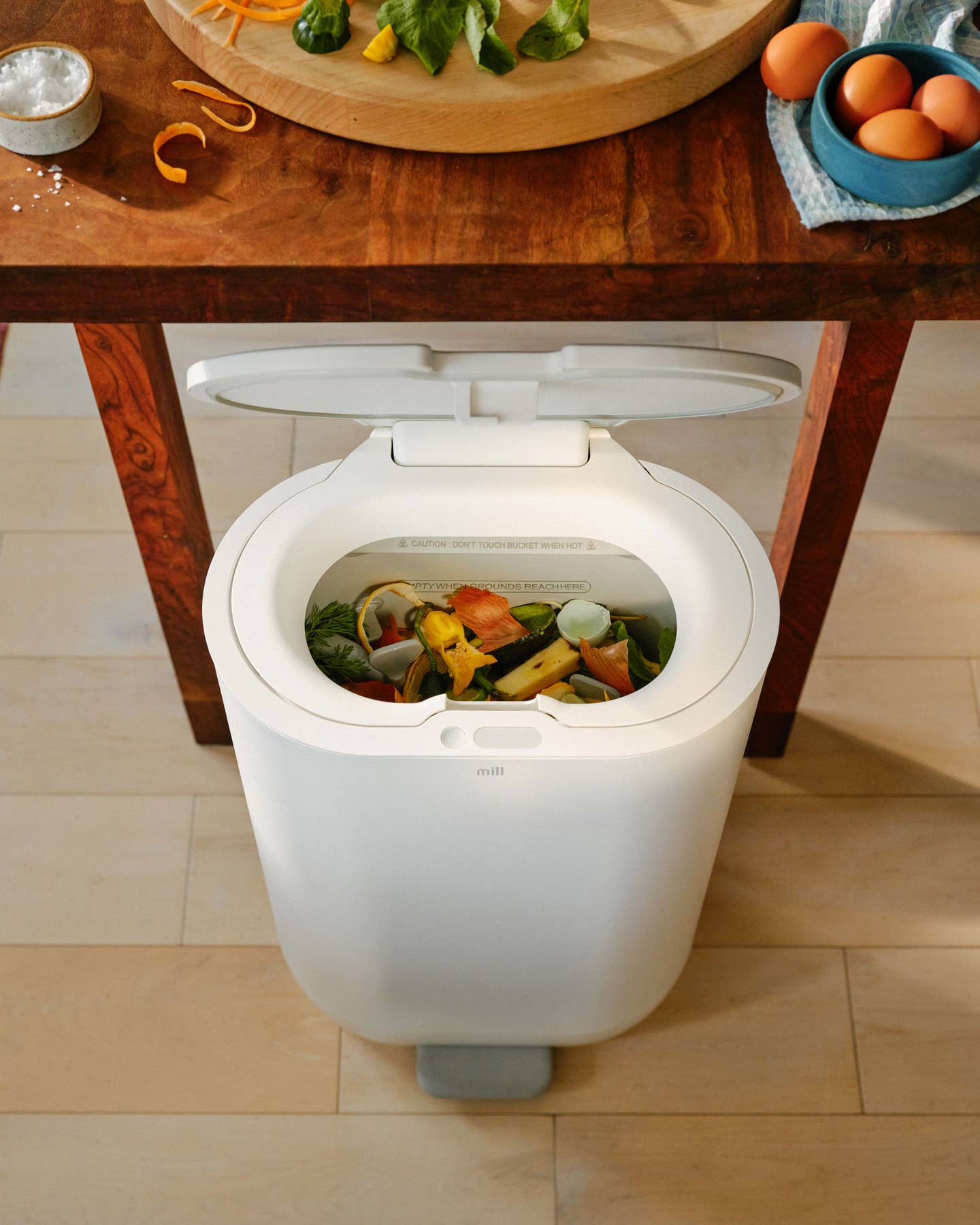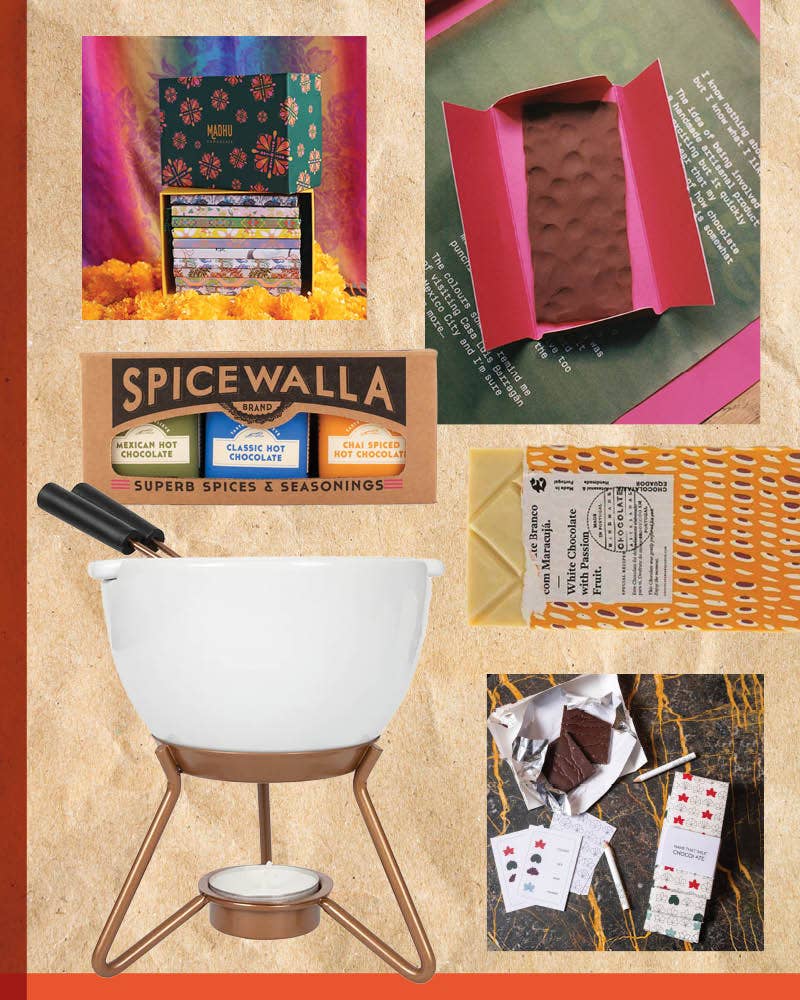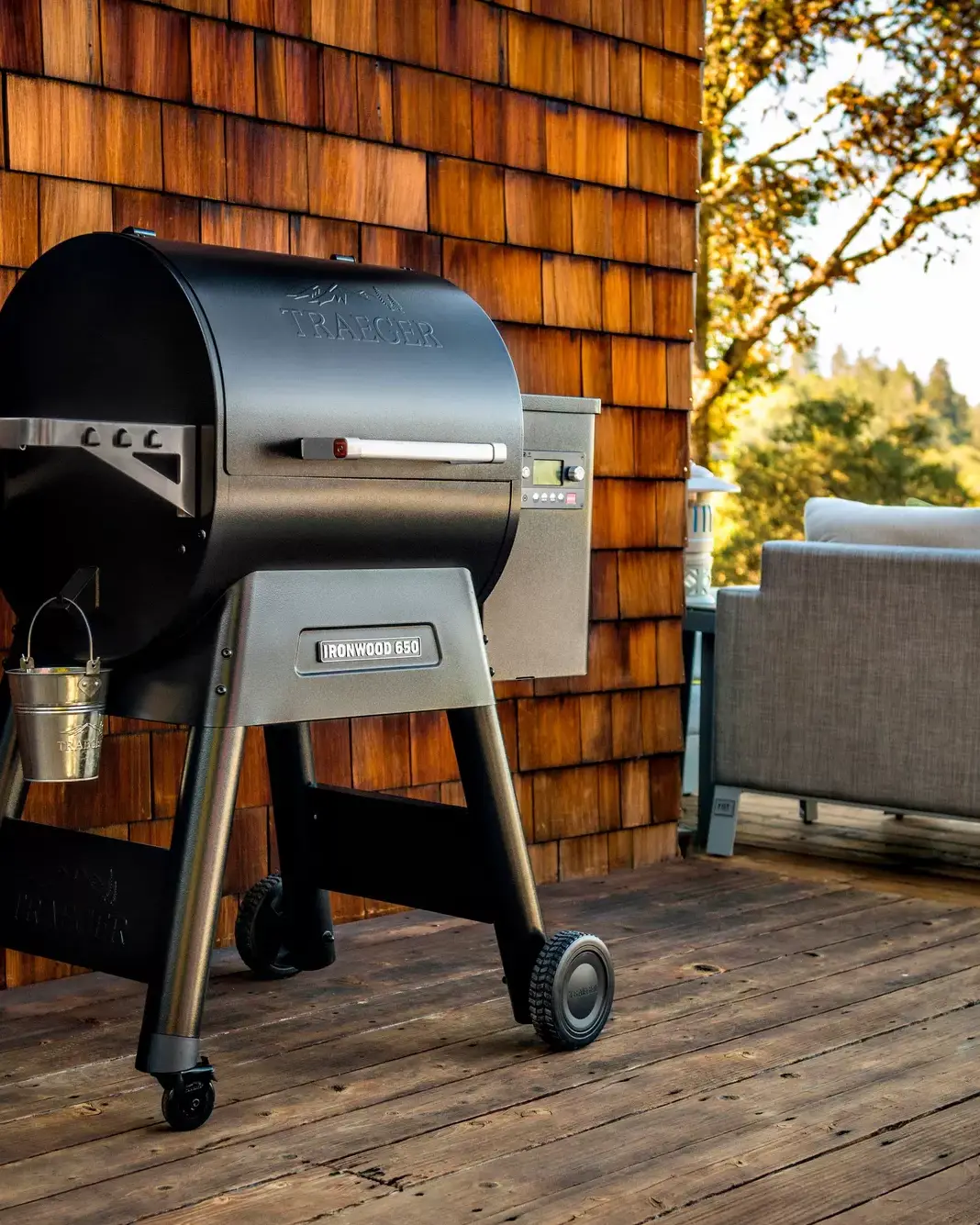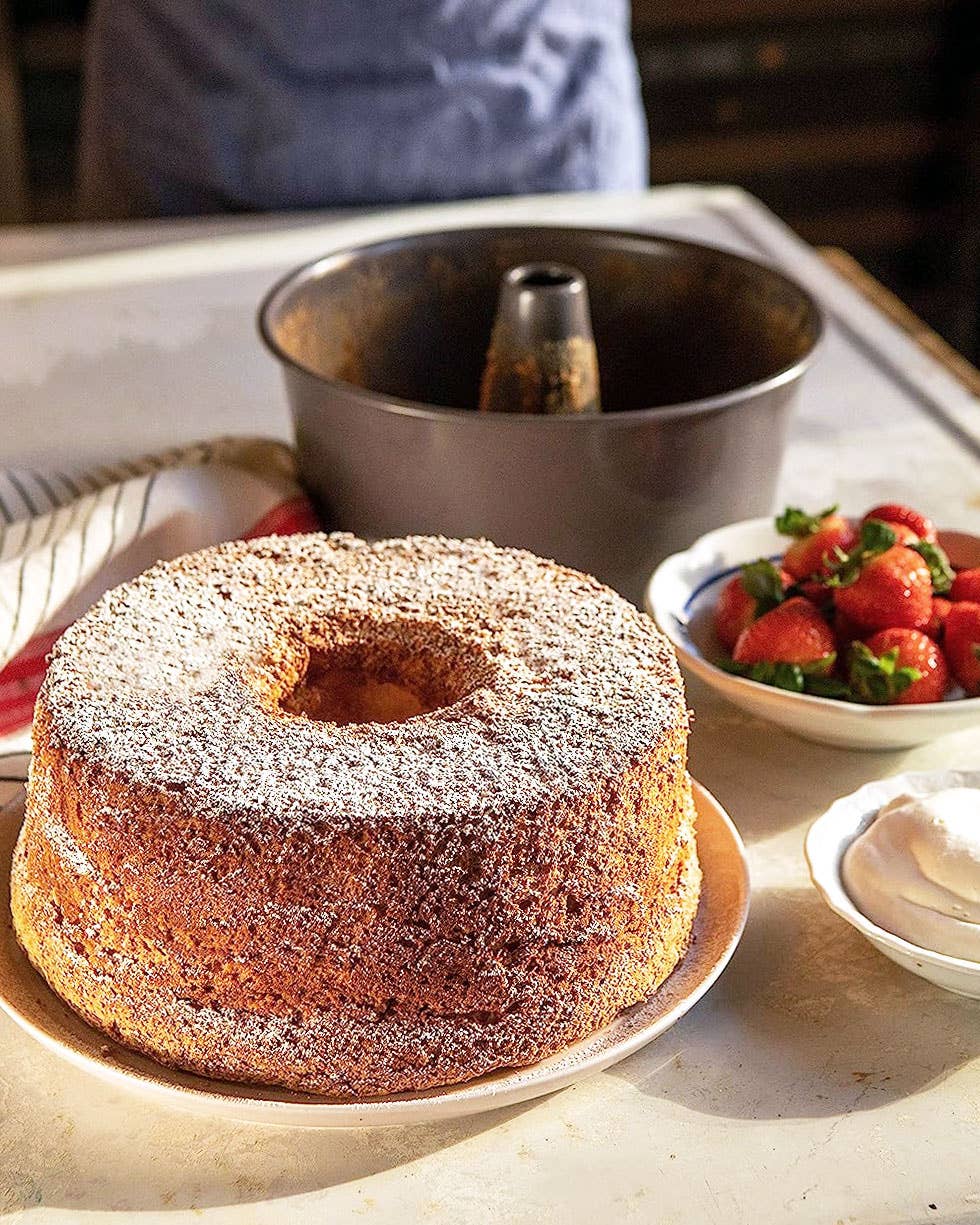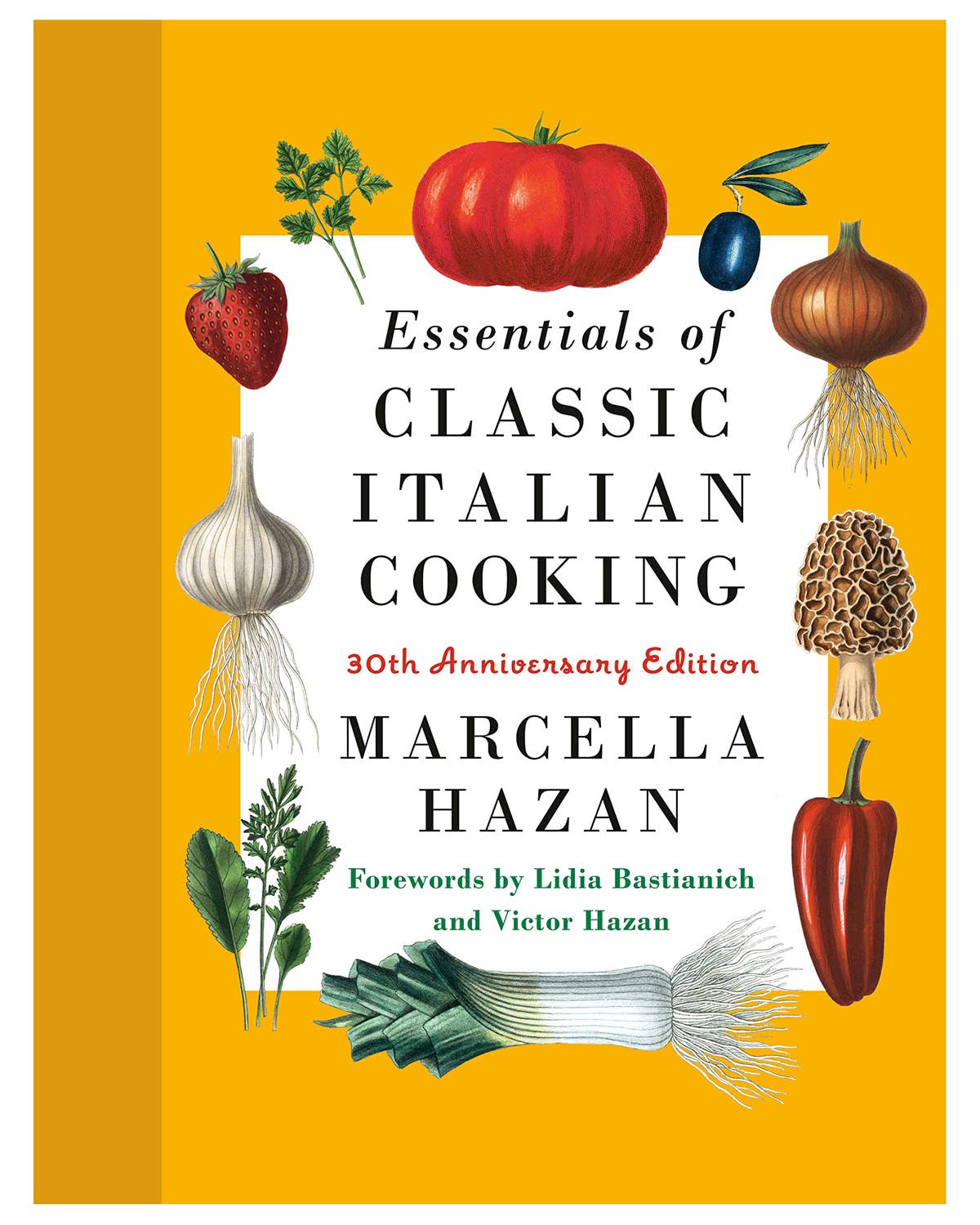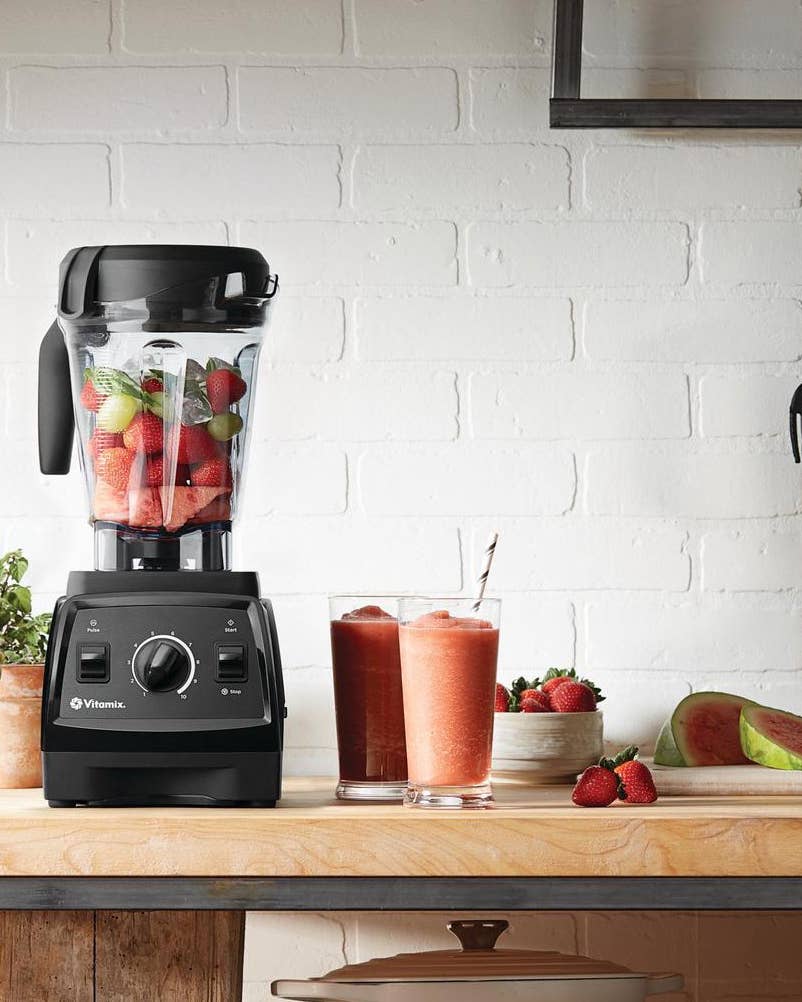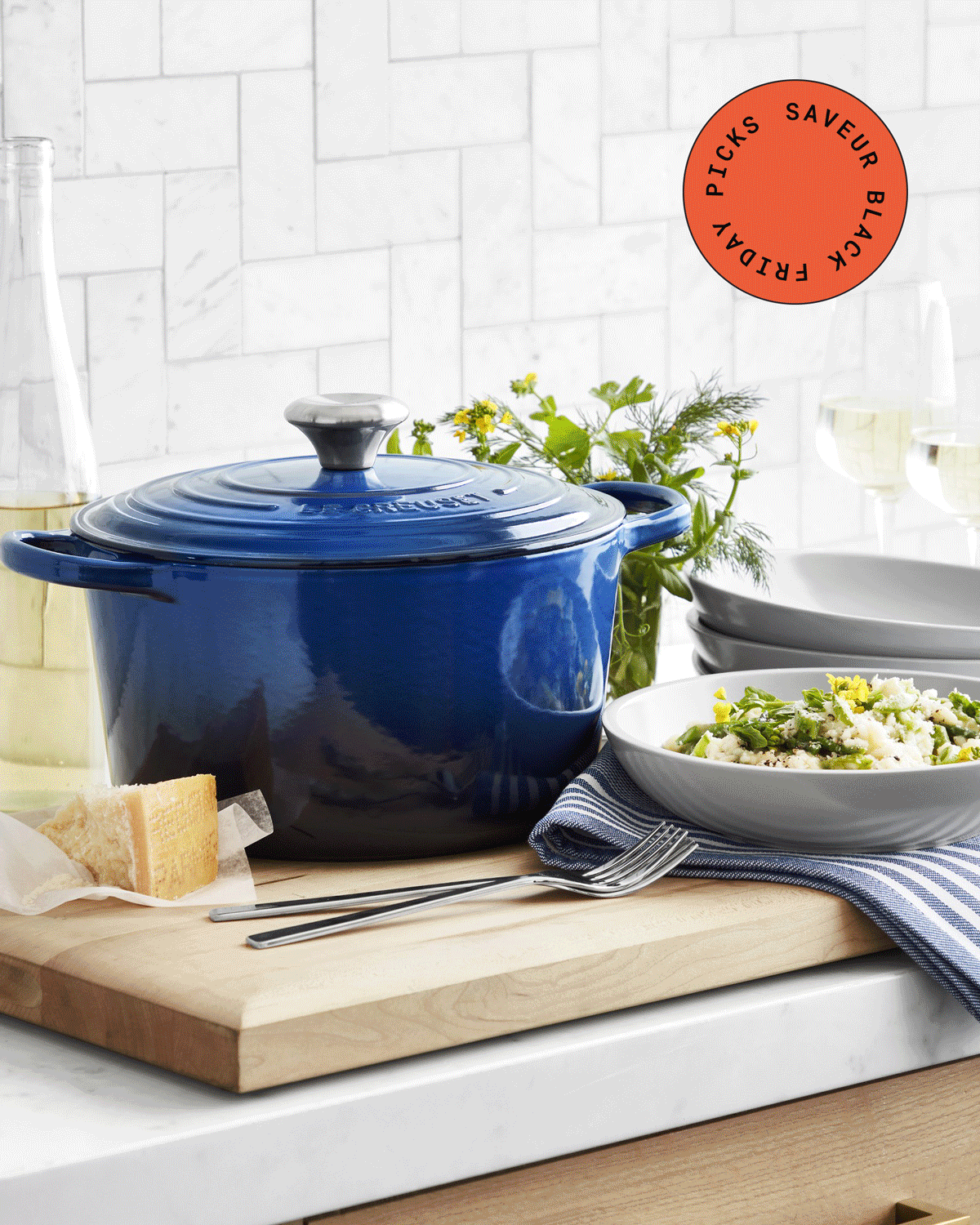From Pastries to Pizza, the Best Baking Pans Go the Distance
Never burn your bottoms again.
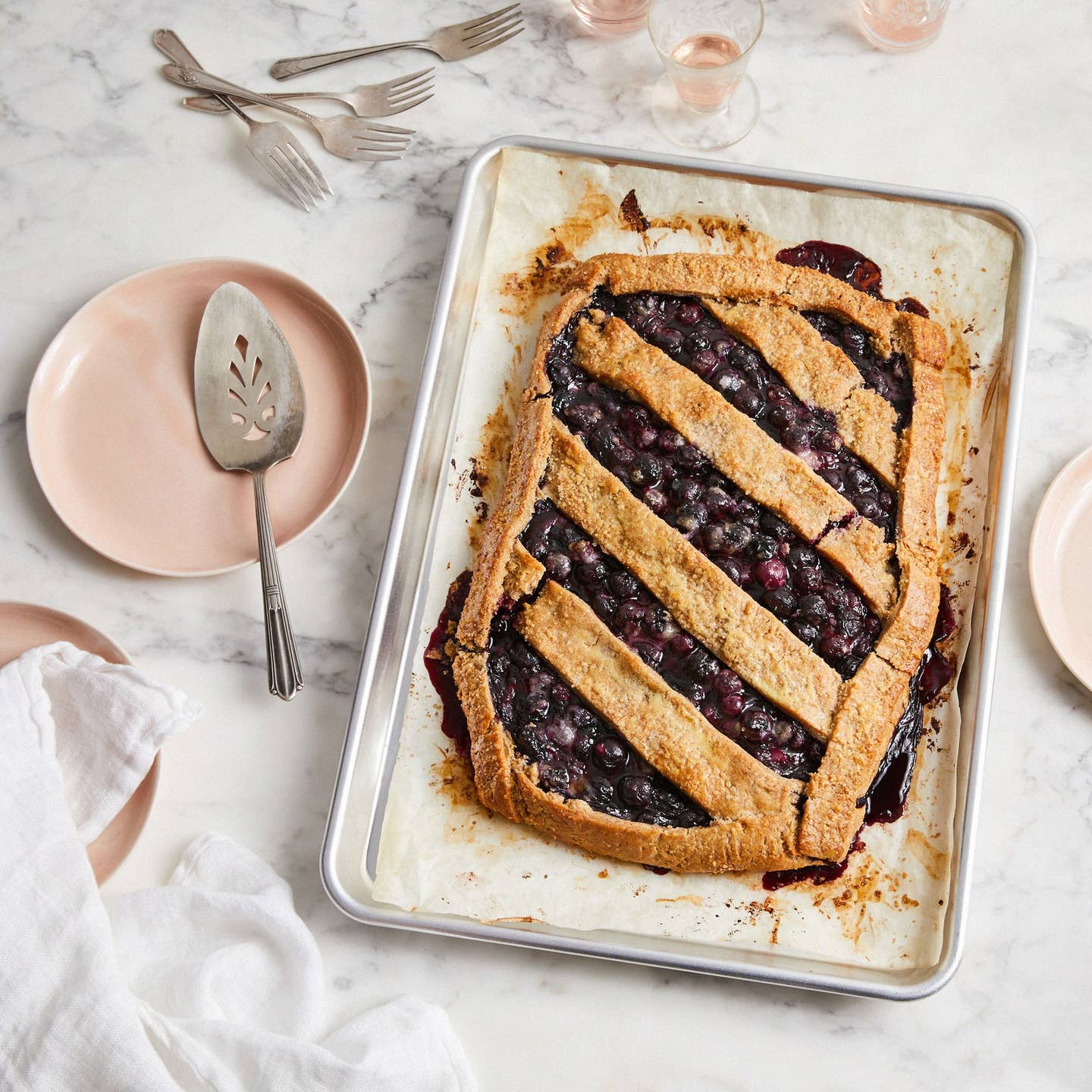
For the novice baker, sorting through all the available bakeware options could be enough to make you stay away from the oven altogether. Should you choose nonstick or ceramic? Do you really need both a pie pan and a cake pan? And, what’s the difference between a baking sheet and a cookie sheet anyway? While it can seem rather overwhelming, start by thinking about your habits and space. Consider your go-to dishes, the scope of recipes you like to follow, how hard you are on your cooking tools, and the amount of storage in your kitchen to narrow down the list. To make it even easier to stock your cabinets with durable and reliable tools, we’ve rounded up our favorites. Read on for the best baking pans and sets we swear by.
- Best Overall: Calphalon Nonstick Bakeware 10-Piece Set
- Best Value: Chicago Metallic Commercial II Nonstick 6-Piece Bakeware Set
- Best Cake Pan: Fat Daddio’s Round Cake Pan
- Best Cast Iron: Lodge Seasoned Cast Iron Baking Pan
- Best Pie Dish: Emile Henry Classic Ceramic Pie Dish
- Best Half-Sheet Pan: Nordic Ware Natural Aluminum Baking Sheet
- Best Stoneware: Le Creuset Stoneware Heritage Square Dish
Features to Keep in Mind When Shopping for Baking Pans
Type
While there are probably hundreds of specialty pans out there, focus on the essentials that will cover almost any recipe you try: half-sheet pans, square and rectangular baking dishes, cake pans, and a loaf pan. But ultimately, “the best baking pan is one you will actually use,” says Caitlin Dysart, pastry chef at Centrolina and Piccolina in Washington, D.C. She also recommends thinking outside the box: “I like to buy pans that can be used for a variety of recipes, to avoid having single-purpose kitchen tools.” A half-sheet, for example, can be used for cookies as well as for roasting veggies and heating up pizza.
Material
Melanie Moss of Mini Melanie offers a rundown on two of the most popular materials, aluminum and steel. “Aluminum baking sheets are best used for food that’s cooked at high heat for short amounts of time; such as cookies or muffins,” she says. But, she notes that aluminum can react with acidic foods like vinegar, citrus, and tomatoes, so it’s good to have stainless steel pans on hand, too. “That material is dishwasher safe for easy cleaning, but heat isn't distributed that evenly.”
Size
Moss prefers 13'' x 9'' baking trays with about 1'' in height. “They’re great for roasting items and baking cookies,” she says. For round cake pans, look for a 9” diameter. Square pans are similar; approximately 9” per side is ideal. She offers this word to the wise: “Make sure the pan can fit into your oven before you leave the store."
Our Top Picks
Best Overall: Calphalon Nonstick Bakeware 10-Piece Set
This set contains everything a beginner or veteran baker may need: a cookie sheet, a baking sheet, two round cake pans, a “brownie” or rectangular pan with a lid, a loaf pan, a muffin pan, and a cooking rack. This is our favorite set for two important reasons: the heavy-gauge steel core in each piece is super durable, plus the interlocking layers of nonstick material allow for easy release of food. Bonus: they’re all dishwasher-safe, so clean up is a breeze.
With this set from Chicago Metallic, you can outfit your kitchen with basically every pan you’ll need for just over $40. It includes a loaf pan, a baking sheet, a muffin pan, a cake pan, a rectangular pan, and a square pan. All the pieces are constructed with heavyweight aluminized steel for better heat conduction, and feature reinforced rims to prevent the pans from warping in the oven. A dual-layer of nonstick material means no cookie is left behind.
Best Cake Pan: Fat Daddio’s Round Cake Pan
While you may not be baking birthday cakes on the regular, there’s really no pan that can substitute for a classic round. And remember, you can also use it for deep-dish pizzas. We love Fat Daddio’s for its durability: not only can it withstand temperatures of up to 550 degrees Fahrenheit, but thanks to its anodized aluminum construction, it will never rust. It also heats evenly and cools down quickly, meaning there is less risk of overbaking (read: burning) your cake.
Best Cast Iron: Lodge Seasoned Cast Iron Baking Pan
We know, we know, cast iron bakeware? But hear us out: Lodge’s version is pre-seasoned, which is just a more professional way of saying that it’s already nonstick. Plus, there is really no baking material more hardy: iron will never warp in the oven or get dented—you could literally use this same pan for generations. And, not for nothing, it just looks cool. Imagine baking a focaccia and serving it in this beauty.
Best Pie Dish: Emile Henry Classic Ceramic Pie Dish
When bakeware is both functional and beautiful, it’s a true unicorn. That’s why we love Emile Henry’s pie dish: with its scalloped edge and vivid hue, it’s pretty enough to leave out on the shelf. But it’s not just fashion over function; with French Burgundy clay construction it also diffuses heat superbly. It’s also durable. The dish can withstand temperatures of up to 520 degrees Fahrenheit (but can also live in the freezer!) and has a scratch-resistant surface. You can slice your pies and quiches right in the pan.
Best Half-Sheet Pan: Nordic Ware Natural Aluminum Baking Sheet
It is almost universally acknowledged that there is no better baking sheet than Nordic Ware’s simple, durable version. It’s built from natural aluminum, ideal for even baking and browning. You can use it to bake almost anything: cookies, granola, vegetables, sausages—you name it. And don’t worry about warps: an encapsulated and galvanized steel rim keeps the pan from losing its shape even after many trips in and out of a hot oven.
Best Stoneware: Le Creuset Stoneware Heritage Square Dish
Stoneware is simply the name for a type of non-porous ceramic. It is studier than porcelain, which makes it an excellent material for any type of baking pan. The most famed name in stoneware is certainly Le Creuset, and while their pieces aren’t cheap, the high quality, even heating abilities, and array of bright colors are certainly worth the price. This square dish is ideal for anything from brownies to roasted vegetables.
Ask the Experts
What’s the best way to make sure ingredients don’t stick to a baking pan?
“Don't be ashamed to use aluminum foil and spray it for easy weeknight cleanup,” says Moss. “If you want more texture [on your food], don't use foil for savory cooking, but make sure to use enough oil or fat. For baking, parchment sheets are the best for even bakes and easy release.”
Do you still need to grease silicone or other nonstick pans?
“100 percent. It is a fallback, just in case,” says Chef Tab Volpe, corporate pastry chef for the Barbara Lynch Collective. “No one wants the added stress if something were not to be released.”
Any cleaning tips for removing baked-on mess?
“Soak the pans in soapy water,” recommends Volpe. “Then, if dishwasher-safe, run them through a cycle and make sure the pans are dried off completely after being washed.”
Keep Reading
Continue to Next Story
